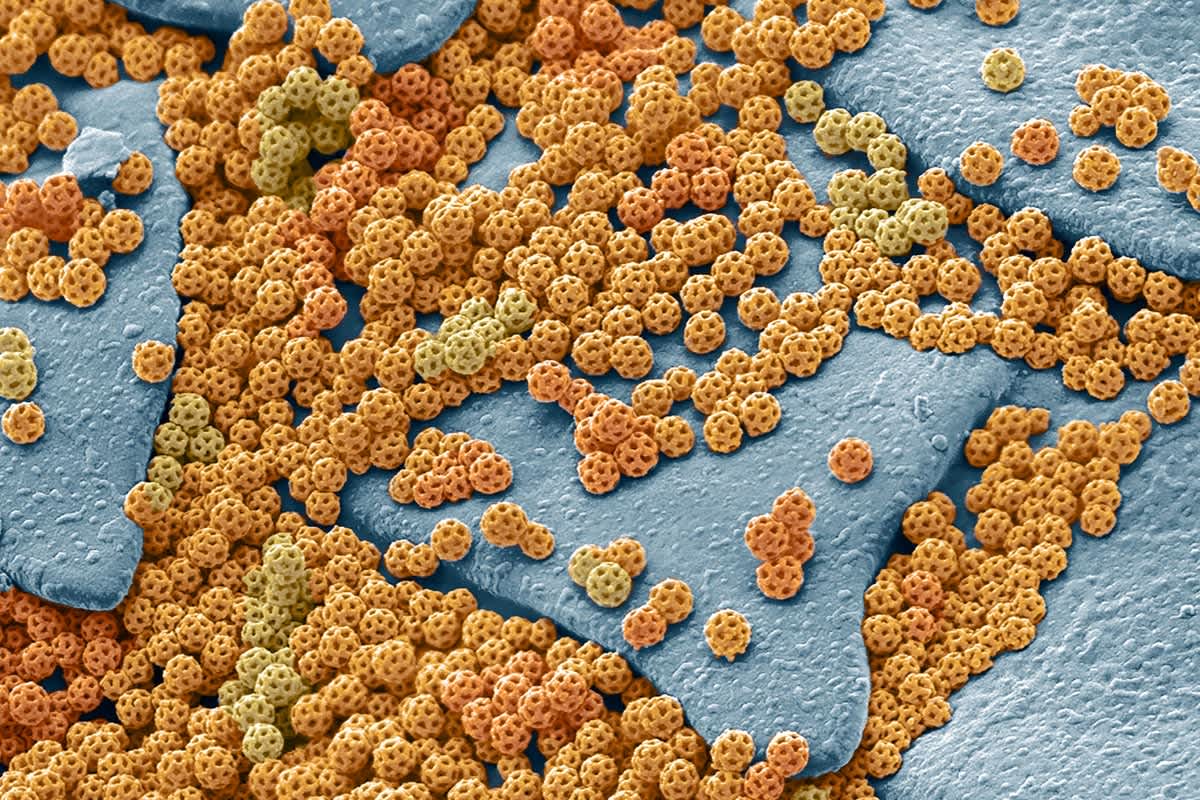Nanotech Scientists Build on an Insect’s Odd Soccer Ball-Like Excretions to Design Ingenious Camouflage
Artificial versions of nanoscale soccer-ball-like structures called brochosomes might be used to make new forms of military camouflage, self-cleaning surfaces or hydrogen fuel
Brochosomes
“Our group first became intrigued by brochosomes around 2015, drawn to their nanoscale dimensions and intricate, three-dimensional buckyball-like geometries,” says Tak-Sing Wong, a biomedical and mechanical engineer at Pennsylvania State University. “We were amazed by how leafhoppers can consistently produce such complex structures at the nanoscale, especially considering that even with our most advanced micro- and nanofabrication technologies we still struggle to achieve such uniformity and scalability.”
If you’re enjoying this article, consider supporting our award-winning journalism by subscribing. By purchasing a subscription you are helping to ensure the future of impactful stories about the discoveries and ideas shaping our world today.
Wong says the synthetic brochosomes are potentially suitable for a range of applications, including antireflection and camouflage materials, anticounterfeiting, data encryption and an “optical security,” tactic in which hidden information becomes visible only when it is illuminated with, say, infrared or ultraviolet light. The researchers have been able to garner grant money from the Office of Naval Research, which is always on the lookout for the next way to make it harder for adversaries to detect and track naval vessels, aircraft and other U.S. military assets.
Much of the recent brochosome-inspired R&D around the world, Wong notes, derives from the ultra-antireflective upgrade that nature-made brochosomes add to leafhoppers’ body. It’s not just cool optical physics: this trick of the light renders the insects stealthy on leaf surfaces where hungry insects, birds and spiders scan for prey.
Researchers have explored a half-dozen ways of fabricating synthetic brochosomes of various sizes and geometries. Through the use of different polymeric, ceramic and metallic materials, the cabinet of brochosome-inspired technocuriosities is only becoming more eye-catching.
A team of Chinese researchers who are brochosome fans recently reported a process for making a vivid spectrum of color-bestowing particles by filling tiny indentations—“nanobowl” spaces—on silver brochosome structures with tiny polystyrene spheres. When the researchers tailored the sizes of the spheres with a precise etching method, they were able to tweak the electromagnetic interactions between the spheres and, thereby, the apparent colors of the synthetic brochosome-structures. In an ACS Nano paper in which the researchers rolled out their color-making strategy, they suggested this opened a pathway for producing longer-lasting and more stable colors compared with shorter-lived chemical dyes and pigments.
A different Chinese research group, attempting to emulate the master-of-disguise feats of chameleons, cephalopods and other creatures, fabricated tungsten-oxide-based brochosome structures that become less reflective when they are electrically stimulated. One possible end point for this work could be energy-saving applications—windows that could regulate the amount of solar and thermal energy that passed through them over the course of the day.
On an even more expansive and eclectic to-do list are light-harvesting electrodes that could generate and corral energized electrons to make hydrogen fuel and self-cleaning surfaces that could repel liquids and adhesives. Also on the list are sensors that could be tailored for detecting specific bacteria and proteins for environmental monitoring and health applications. Additionally, there is the prospect of brochosome-inspired particles whose pores and surfaces could be tailored to carry specific drugs to target tissues.
Meanwhile Shen welcomes a humbling aspect of this research romance with brochosomes. “It’s a powerful reminder that innovation doesn’t always need to come from human ingenuity,” he says. “Sometimes nature has already solved the problems we’re working on.”
Source: www.scientificamerican.com
